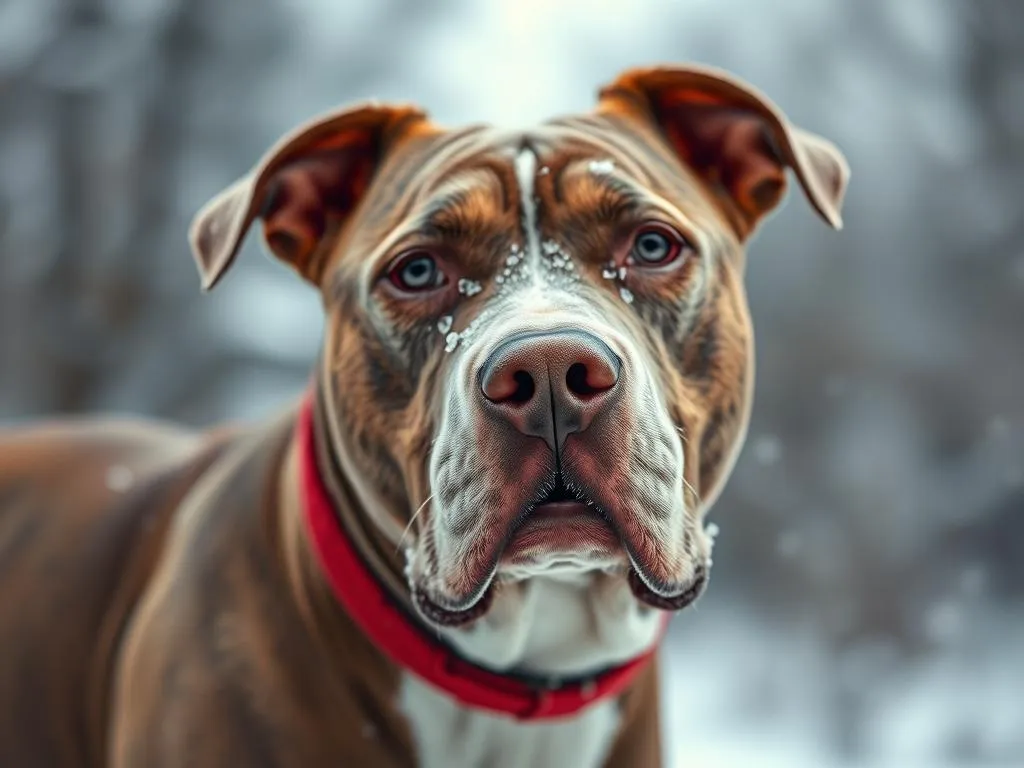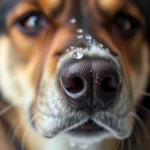
Understanding the health and well-being of your dog is an essential part of responsible pet ownership. For Pitbulls, like all breeds, temperature sensitivity is a critical factor to consider. Recognizing how cold is too cold for a Pitbull not only ensures their comfort but also protects them from potential health risks associated with low temperatures.
Understanding Pitbulls
Breed Characteristics
Pitbulls are a group of breeds that typically include the American Pit Bull Terrier, American Staffordshire Terrier, and Staffordshire Bull Terrier. Known for their muscular builds and strong jaws, these dogs are often loyal companions and are recognized for their intelligence and energy. Common physical traits include a broad head, a sturdy body, and a short coat that can come in various colors.
While they are generally healthy, Pitbulls can be prone to certain health issues, such as hip dysplasia and skin conditions. Understanding these characteristics is important, as they can affect how your Pitbull handles different weather conditions.
Temperature Sensitivity
When it comes to temperature tolerance, Pitbulls have some unique traits. Unlike breeds with thick, double coats, such as Huskies or Golden Retrievers, Pitbulls have short hair and less body fat, which makes them less tolerant to cold weather. While they may be more resilient than some other breeds, it’s crucial to understand their limits.
In comparison to other dog breeds, Pitbulls can struggle in colder climates. Their short coat offers minimal insulation, making it essential for owners to pay close attention to their comfort and safety in low temperatures.
The Science of Cold Weather and Dogs
How Dogs Regulate Body Temperature
Dogs regulate their body temperature through a process called thermoregulation. Unlike humans, dogs do not sweat to cool down; instead, they cool off mainly through panting. In cold weather, they rely on their fur, fat, and overall body condition to maintain warmth.
Factors that affect a dog’s ability to tolerate cold include age, health status, and acclimation to colder environments. Puppies and senior dogs are particularly vulnerable to the cold, as their body systems may not function as efficiently as those of healthy adult dogs.
Effects of Cold Weather on Dogs
Cold weather can have various physical effects on dogs, including the risk of hypothermia and frostbite. Hypothermia occurs when a dog’s body temperature drops too low, leading to lethargy, weakness, and potentially life-threatening consequences. Frostbite mainly affects the extremities, particularly the paws, ears, and tail, where circulation is less robust.
Moreover, dogs can exhibit behavioral changes in response to the cold. You might notice increased anxiety or refusal to go outside, which can be signs that your Pitbull is uncomfortable in chilly temperatures.
Signs That Your Pitbull is Cold
Physical Signs
Recognizing when your Pitbull is cold is vital for their well-being. Some common physical signs include:
- Shivering and trembling: This is often the first sign that your dog is feeling chilly.
- Curling up or seeking warmth: Dogs may instinctively curl into a ball or seek out cozy spaces.
- Changes in posture or movement: A cold dog may exhibit stiffness or reluctance to move around.
Behavioral Signs
In addition to physical indicators, behavioral signs can help you determine if your Pitbull is too cold:
- Reluctance to go outside: If your dog hesitates to step outside, it may be a sign that they are uncomfortable with the temperature.
- Whining or barking to come in: Vocalizations can indicate distress or discomfort.
- Seeking out warm areas in the home: If your dog consistently gravitates towards heat sources or cozy blankets, it’s a sign they are feeling the chill.
Ideal Temperatures for Pitbulls
Temperature Guidelines
While each dog is unique, a general guideline suggests that temperatures below 32°F (0°C) can be dangerous for Pitbulls. At this point, your dog is at increased risk of experiencing cold-related health issues.
As temperatures drop further, especially below 20°F (-6°C), it’s crucial to limit outdoor activities. Always monitor your Pitbull closely during cold weather, as even short periods outside can lead to discomfort or health issues.
Factors Influencing Cold Tolerance
Several factors can influence a Pitbull’s cold tolerance:
- Age: Puppies and older dogs are more susceptible to cold.
- Size: Larger dogs may retain heat better than smaller ones.
- Health Status: Dogs with underlying health issues may be less tolerant to cold.
- Coat Type: The short coat of a Pitbull offers less insulation than longer-haired breeds.
- Acclimation: Dogs that gradually adjust to cooler temperatures may handle the cold better than those that have not.
Preparing Your Pitbull for Cold Weather
Clothing and Accessories
As a responsible owner, you can help your Pitbull stay warm during colder months. Consider investing in a well-fitted dog coat or sweater that provides insulation without restricting movement. Additionally, dog boots can protect their paws from snow, ice, and salt, which can be harmful.
Safe Outdoor Practices
When taking your Pitbull outside in cold weather, keep the following tips in mind:
- Limit outdoor time: Short walks are advisable during extremely low temperatures.
- Monitor your dog closely: Be observant of any signs of discomfort.
- Choose appropriate times: Try to walk your dog when temperatures are relatively warmer, such as mid-day.
Creating a Comfortable Indoor Environment
Inside your home, ensure that your Pitbull has a warm and cozy space to rest. A well-insulated dog bed, warm blankets, and a designated area away from drafts can help keep them comfortable.
Make sure your home is adequately heated during winter months, as even indoor temperatures can drop significantly in poorly insulated spaces.
Health Risks Associated with Cold Weather
Hypothermia
Hypothermia is a serious condition that can occur when a dog is exposed to cold for too long. Symptoms to watch for include:
- Shivering
- Weakness or lethargy
- Slow or shallow breathing
- Unresponsiveness
If you suspect your Pitbull is experiencing hypothermia, it’s crucial to warm them up gradually. Use warm blankets, and contact your veterinarian for further guidance.
Frostbite
Frostbite can occur on areas of your dog’s body that are most exposed to cold, including:
- Paws
- Ears
- Tail
Early signs of frostbite include pale or grayish skin, swelling, and sensitivity to touch. If you notice these symptoms, warm the affected area gently and seek veterinary care promptly.
When to Seek Veterinary Care
Signs of Severe Cold Stress
Recognizing critical symptoms is essential for your dog’s safety. If your Pitbull exhibits any of the following signs, seek veterinary attention immediately:
- Severe lethargy or weakness
- Unresponsiveness or confusion
- Difficulty breathing
- Signs of frostbite
Regular Check-ups
Regular veterinary care is vital for your Pitbull’s overall health. Schedule routine check-ups, especially during colder months, to ensure they are in good health. Discuss vaccinations and preventive care that may be particularly important during winter.
Conclusion
Keeping your Pitbull safe and comfortable during cold weather requires awareness and preparation. By knowing how cold is too cold for a Pitbull, you can take the necessary precautions to protect their health. Always pay attention to their physical and behavioral signs, and don’t hesitate to make adjustments to their environment and routine as needed. Prioritizing your dog’s health during colder months not only ensures their well-being but also strengthens the bond you share.
FAQs
What temperatures are considered dangerous for Pitbulls?
Temperatures below 32°F (0°C) can be dangerous for Pitbulls, with increased risks as it drops further.
Can Pitbulls stay outside in cold weather?
While Pitbulls can tolerate some cold, they should not be left outside for extended periods when temperatures are too low.
How can I tell if my Pitbull is too cold?
Look for signs such as shivering, reluctance to go outside, or seeking warmth inside the home.
What should I do if my Pitbull gets frostbite?
Warm the affected area gently and seek veterinary care immediately if you notice signs of frostbite.









